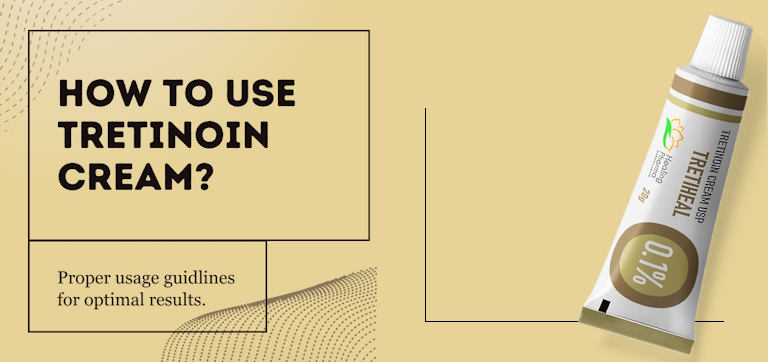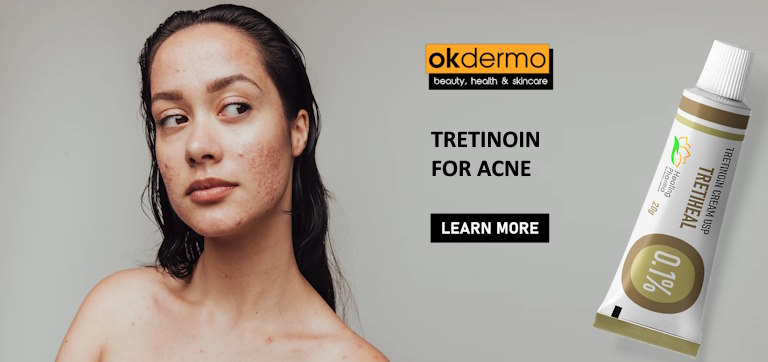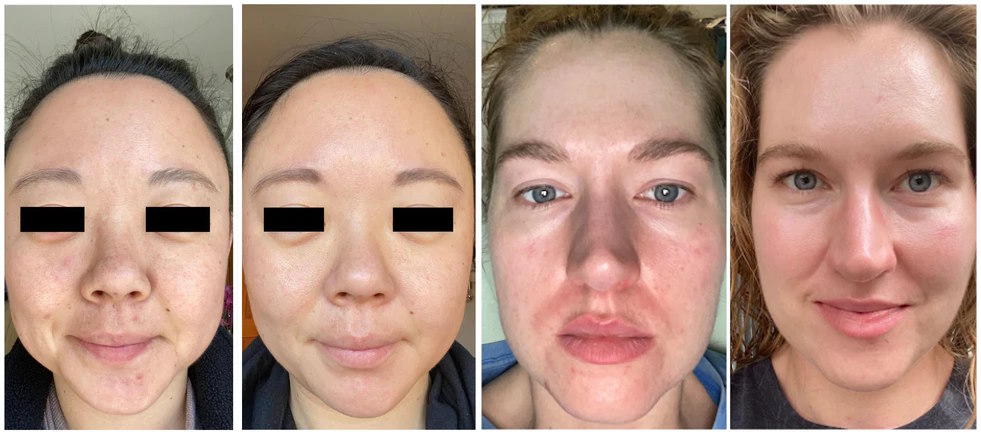How to Use Tretinoin Cream: A Comprehensive Guide for Results
Table of Contents
Tired of the hassle of managing multiple skincare products to combat acne, wrinkles, and dark spots? What if we told you that there exists a singular product capable of addressing all these issues?
Let us introduce you to tretinoin cream! This topical medication has been a trusted choice for almost half a century, effectively treating various skin conditions, including acne, fine lines, and dark spots.
Available in the form of cream and gel, this potent prescription-only treatment, has gained immense popularity in the field of dermatology in recent years as one of the best multitasking skincare products out there, with scientifically proven benefits for multiple skin concerns.
In this comprehensive guide, we will delve into what exactly Tretinoin cream is, various use cases along with scientific evidence, the rationale for using Tretinoin for each skin concern and provide you with valuable insights on how to use tretinoin cream to achieve the best results.
What is Tretinoin cream?
Tretinoin cream is a topical formulation that belongs to a class of medications called retinoids and is derived from Vitamin A. It works by stimulating cell turnover and promoting the growth of new skin cells making it a go-to solution in many anti-aging skincare regimes.
Primarily renowned for its anti-aging prowess and efficacy in treating acne vulgaris, tretinoin can also stimulate collagen synthesis, reducing fine lines and wrinkles.
But the magic doesn’t stop there. Tretinoin moonlights as a hyperpigmentation eraser, fading dark spots and sun damage, making it a versatile powerhouse ingredient that addresses a spectrum of skin concerns.
What Is Retin – A?
Tretinoin cream is currently available under several brand names. Here are some of them: Tretiheal, Tretin, Retino-A, Altreno, Atralin, Avita, Renova, Retin-A, Retin-A Micro, Tretin-X.
-
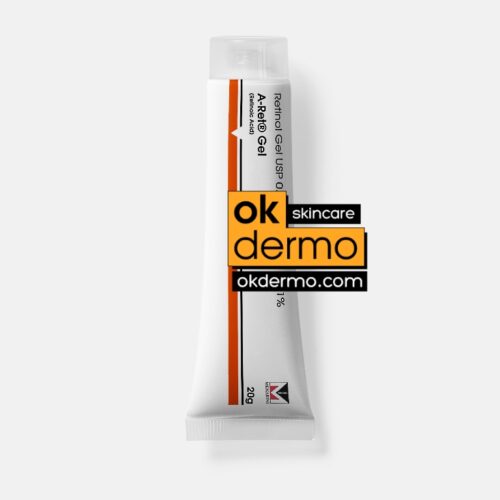
A-Ret® Tretinoin Retinoid Skin Gel
Tretinoin 0.025% / 0.05% / 0.1% USP
Size: 20g / 0.7oz
Brand name: Retin-A Gel, Atralin, Renova, Avita
From USD $25.00 Select options -
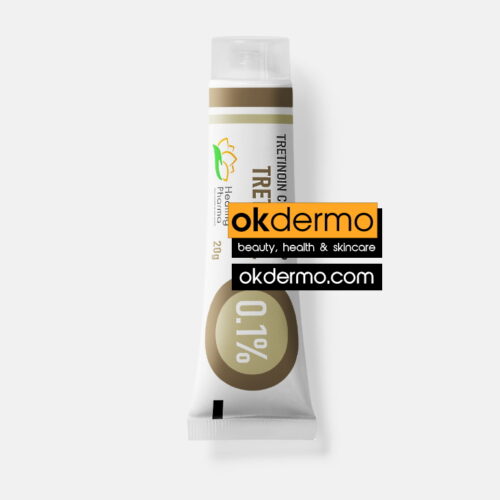
Retin-A® Tretinoin Topical Cream
Tretinoin Cream USP 0.025% / 0.05% / 0.1%
Size: 20g / 0.7oz, 30g / 1.05oz
Brand name: Retin-A, Vitacid, Renova, Avita, Refissa, Atralin, Tretin-X, Rejuva-A, Stieva-A, Tretinoïne, Retacnyl
From USD $26.00 Select options -
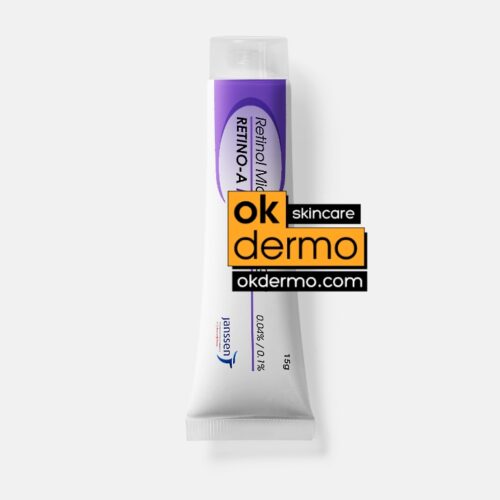
Retin-A Micro® Tretinoin Gel Micronized
Tretinoin Microspheres™ 0.04% / 0.1%
Size: 15g / 0.53oz
Brand name: Retin-A Micro Gel, Atralin, Renova, Avita, Supatret, Signatret, Trunex
From USD $25.00 Select options
Retin-A is a popular brand of tretinoin and is often used interchangeably with the term tretinoin, much like how some brand names become synonymous with the product itself. Retin-A was developed in the late 60s and is currently widely accepted for the treatment of many dermatological conditions.
How to use tretinoin cream?
When it comes to incorporating Tretinoin cream into your skincare routine, it’s crucial to follow specific guidelines for optimal results. Here are some key insights on how to use Tretinoin cream effectively:
- Consultation with a healthcare professional: Before incorporating Tretinoin cream into your skincare routine, it’s essential to consult with a dermatologist or healthcare professional who can assess your specific needs and provide personalized guidance.
- Start with a low concentration: Tretinoin creams are available in different strengths ranging from 0.025% to 0.1%. It’s recommended to begin with a lower concentration and gradually increase as your skin adjusts to the treatment.
- Cleanse and dry your skin: Before applying Tretinoin cream, ensure that your face is clean and dry. Gently wash with a mild cleanser suitable for your skin type and pat dry.
- Apply pea-sized amount: Take a pea-sized amount of the cream onto your fingertips and apply it evenly across the affected area(s) of your face or body.
- Avoid sensitive areas: Be cautious when applying near sensitive areas such as the eyes, nostrils, mouth, or open wounds as Tretinoin may cause irritation.
- Use at night: Tretinoin cream is best used at night as it can increase sensitivity to sunlight. Apply a broad-spectrum sunscreen with SPF during the day to protect your skin from harmful UV rays.
- Be patient and consistent: Results from Tretinoin cream may take time to become noticeable. It’s important to be patient and consistent with your application, following the recommended frequency as advised by your healthcare professional.
Using Tretinoin with Moisturizer
Clinical findings on Tretinoin usage reveal that patients could experience initial dryness and irritation, especially in the first few weeks of use until their skin starts to adapt to the new medication.
Therefore, to minimize these side effects, dermatologists often recommend using a moisturizer along with tretinoin. A moisturizer can help hydrate the skin, restore the skin barrier, and prevent excessive peeling.
According to a 2019 study, using tretinoin with a moisturizer can also improve its effectiveness and tolerability. However, not all moisturizers are suitable for use with tretinoin. Some factors to consider when choosing a moisturizer are:
- Type of skin: People with oily or acne-prone skin may benefit from oil-free or non-comedogenic moisturizers that do not clog pores. People with dry or sensitive skin may prefer richer or creamier moisturizers that provide more hydration and protection.
-

Hyalugel Plus® Hyaluronic Aqueous Gel
2.5% Hyaluronic Acid Moisturizing Agent
Size: 30g / 1.05oz
Brand name: Bionect, Gelclair, Xclair, Hylase
USD $28.00 Add to cart -
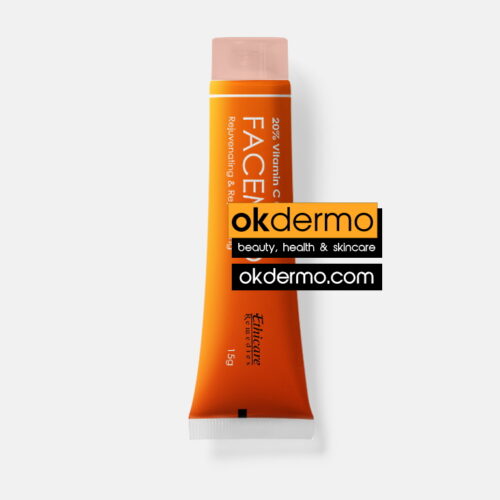
Facemed® Vitamin C 20% Topical Gel
L-Ascorbic Acid 20% + Vitamin E
Size: 15g / 0.53oz
USD $26.00 Add to cart -
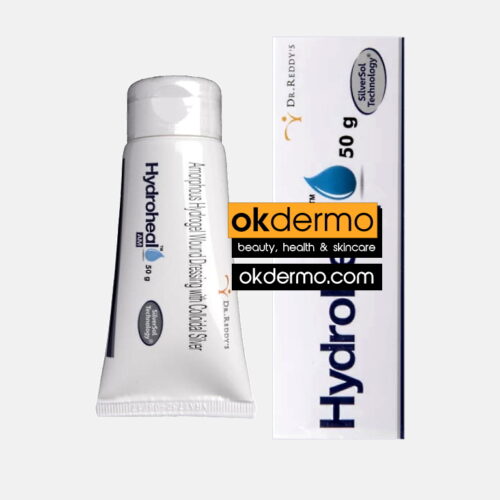
Hydroheal AM® Topical Anti-Infective Gel
Amorphous Hydrogel Wound Dressing + Colloidal Silver
Size: 50g / 1.76oz
Brand name: Aceso Ag, Arida, Collatyl, SilvaSorb, Silverseal, Solox
USD $24.00 Add to cart -
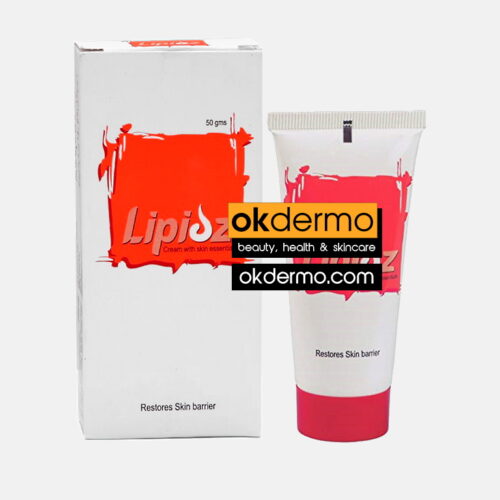
Lipidz® Skin Barrier Cream
Hyaluron 0.1% + Ceramide 0.5% + Squalene 2% + Lecithin 0.5%
Size: 50g / 1.8oz
USD $19.00 Add to cart
- The ingredients: Some ingredients may interact negatively with tretinoin or cause further irritation. For example, alcohol, fragrances, menthol, and salicylic acid may dry out or sting the skin.
- The timing: The best time to apply moisturizer depends on personal preference and skin tolerance. Some people may prefer to apply moisturizer before tretinoin to create a buffer layer that reduces irritation. Others may prefer to apply moisturizer after tretinoin to seal in the medication and prevent evaporation.
Nonetheless, the most important thing is to wait for a few minutes between each application to allow the products to absorb into the skin.
Tretinoin for Acne
Tretinoin can interact with certain nuclear receptors, specifically the retinoic acid receptors (RARs) and retinoid X receptors (RXRs) in our cells, helping the skin cells mature properly and preventing the development of common skin features of acne such as blackheads and whiteheads.
Additionally, it has anti-inflammatory effects, reducing the redness and swelling associated with acne.
When it comes to scientific evidence, Tretinoin has been proven to be effective for acne in several clinical trials. For example, in a clinical trial involving 1640 patients aged 9-58, Tretinoin 0.05% lotion showed impressive results for moderate-to-severe acne. After 12 weeks, there was a substantial 52% decrease in red, inflammatory acne spots and a 46% reduction in non-red spots.
This highlights Tretinoin’s significant impact on improving acne skin conditions in a diverse group of participants.
Another study involving 750 patients with mild to moderate acne showed that treatment with combined tretinoin and clindamycin was significantly superior to tretinoin or clindamycin alone for all types of acne lesions.
Tretinoin for Wrinkles
Tretinoin is also a commonly used medication for the treatment of wrinkles and other signs of aging by increasing collagen production and stimulating blood vessel formation in the skin.
Collagen is a protein that gives skin its firmness and elasticity, while blood vessels improve skin color and nourishment. Tretinoin also speeds up the turnover of skin cells, allowing new and healthy cells to replace old and damaged ones.
Several clinical trials have shown that tretinoin can improve the appearance of fine lines and wrinkles, especially around the eyes, mouth, and forehead.
For example, one study published in the British Journal of Dermatology found that tretinoin produced “significant improvements” in these areas, as well as in skin discoloration and roughness.
Another study published in JAMA Dermatology reported that tretinoin increased the expression of retinoid target genes in the skin, which are involved in collagen synthesis and skin repair. Tretinoin can also fade age spots, even out skin tone, and smooth rough patches of skin.
Many experts recommend incorporating tretinoin into an anti-aging skincare routine as early as possible, preferably in your 20s or 30s. Tretinoin can not only treat existing wrinkles but also prevent new ones from forming by protecting your skin from sun damage and environmental stressors.
Furthermore, Tretinoin can also be combined with other skincare products such as moisturizers, antioxidants, and alpha hydroxy acids for enhanced benefits.
-
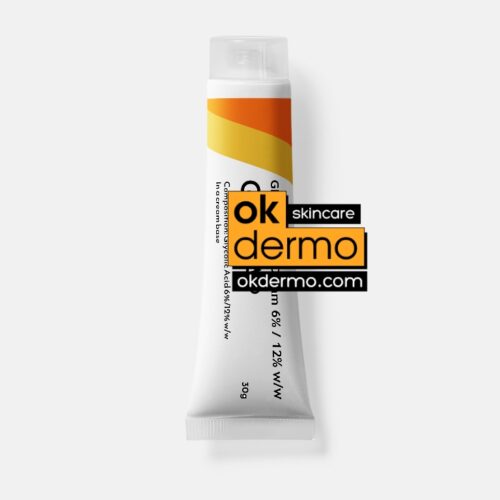
Glyco-A® Glycolic Acid Cream
Glycolic Acid 6% / 12%
Size: 30g / 1oz
From USD $22.00 Select options -
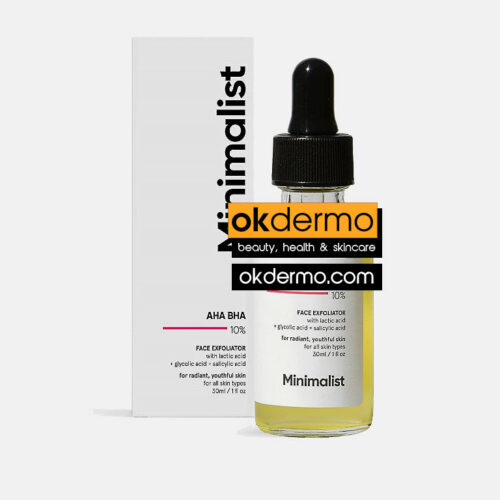
Minimalist® AHA BHA 10% Face Exfoliator
Lactic Acid + Glycolic Acid + Salicylic Acid
Size: 3oml / 1fl.oz
USD $29.00 Add to cart -
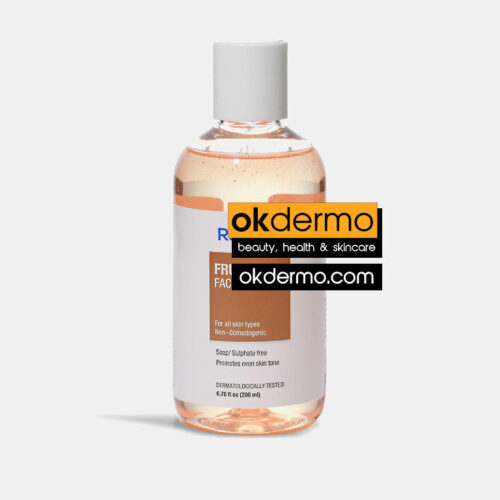
Fruit AHA® Soap-Free Face Wash
Lemon Fruit Extract + Sugarcane Extract + Vaccinium Myrtillus Fruit
Size: 200ml / 0.68fl.oz
USD $28.00 Add to cart -
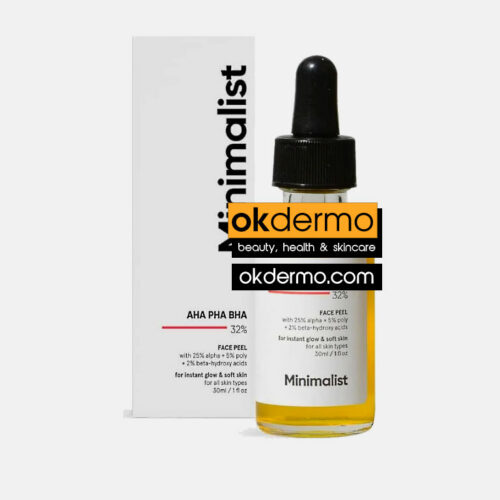
Minimalist® AHA PHA BHA 32% Face Peel Solution
Alpha-Hydroxy Acid 25% + Poly-Hydroxy Acid 5% + Beta-Hydroxy Acid 2%
Size: 30ml / 1fl.oz
USD $33.00 Add to cart -
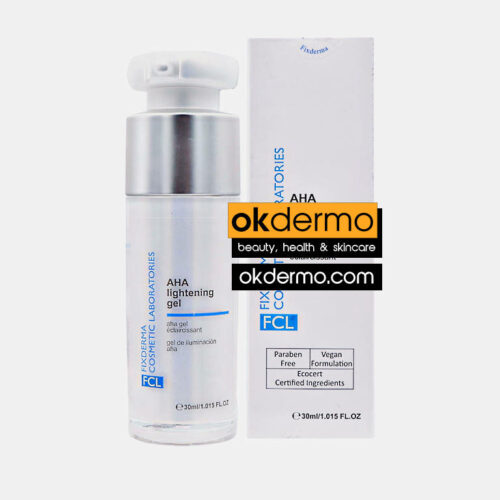
FCL® Natural AHA Skin Lightening Gel
Glycolic Acid + Lactokine Fluid PF® + Multifruit BSC + Grapefruit Extract + Alpha Arbutin + RonaCare® Pristine Bright
Size: 30ml / 1fl.oz
USD $48.00 Add to cart -
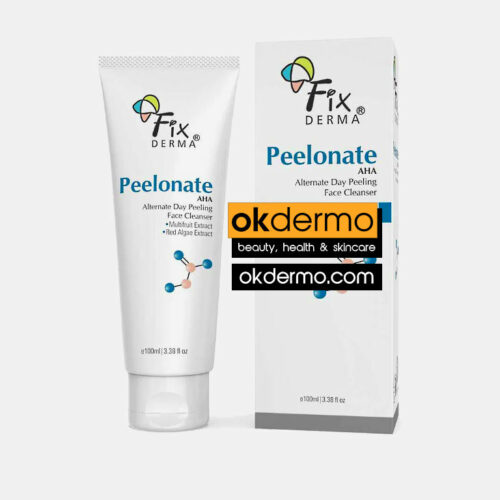
Peelonate AHA® Alternate Day Peeling Face Cleanser
Multifruit BSC 0.5% + Red Algae Extract 0.48% + Vitamin E 0.1%
Size: 100ml / 3.4fl.oz
USD $31.00 Add to cart
Tretinoin for Dark Spots
Tretinoin Cream can also help improve the appearance of dark spots by exfoliating the skin and stimulating collagen and elastin production.
Dark spots, also known as hyperpigmentation, are patches of skin that have more melanin than the surrounding skin. Dark spots can often be caused by sun exposure, hormonal changes, inflammation, or injury to the skin.
As you might already know tretinoin can increase the turnover of skin cells meaning that it helps shed the older, darker layers of your skin and reveal the newer, lighter ones underneath.
It also inhibits the enzyme tyrosinase, which is involved in melanin synthesis. By reducing the amount of melanin in the skin cells, tretinoin can help fade dark spots and make the skin tone more even.
There is also scientific evidence to support the effectiveness of tretinoin in treating hyperpigmentation. According to a 1994 review, topical tretinoin has been shown to improve melasma, post-inflammatory hyperpigmentation, solar lentigines, and freckles.
Conclusion
When it comes to tretinoin, caution is really the key, and consulting with a dermatologist is paramount for a personalized approach. The journey with tretinoin may begin with a slow introduction to avoid potential irritation, but the results are well worth the patience.
So, whether you’re battling wrinkles, acne, or uneven skin tone, Tretinoin cream could be a game-changing ingredient that deserves a place of honor in your daily skincare routine.
FAQs
- How to use Tretinoin cream with moisturizer? Moisturizer? Before or after? We recommend applying moisturizer before using Tretinoin. This creates a protective barrier and ensures maximum hydration for your skin.
- How long do you leave Tretinoin cream on? Apply it at bedtime and leave it on overnight. Let the magic happen while you sleep, waking up to radiant skin in the morning.
- Is it okay to use Tretinoin every night? Absolutely! Regular usage of Tretinoin is key for optimal results. Start slow and gradually increase usage as tolerated by your skin.
- What not to do when using Tretinoin cream? Avoid excessive sun exposure as Tretinoin can increase sensitivity to sunlight. Always wear sunscreen during the day for added protection.
- Is Tretinoin Safe during Pregnancy? Tretinoin is not recommended during pregnancy as it has been associated with an increased risk of fetal abnormalities.
References
- Griffiths CE, Goldfarb MT, Finkel LJ, Roulia V, Bonawitz M, Hamilton TA, Ellis CN, Voorhees JJ. Topical tretinoin (retinoic acid) treatment of hyperpigmented lesions associated with photoaging in Chinese and Japanese patients: a vehicle-controlled trial. J Am Acad Dermatol. 1994 Jan;30(1):76-84. doi: 10.1016/s0190-9622(94)70011-7. PMID: 8277035.
- Tyring SK, Kircik LH, Pariser DM, et al. Novel Tretinoin 0.05% Lotion for the Once-Daily Treatment of Moderate-to-Severe Acne Vulgaris: Assessment of Efficacy and Safety in Patients Aged 9 Years and Older. Journal of Drugs in Dermatology : JDD. 2018 Oct;17(10):1084-1091. PMID: 30365589.
- S. Dogra, T. K. Sumathy, C. Nayak, G. Ravichandran, P. P. Vaidya, S. Mehta, R. Mittal, A. Mane & S. N. Charugulla (2021) Efficacy and safety comparison of combination of 0.04% tretinoin microspheres plus 1% clindamycin versus their monotherapy in patients with acne vulgaris: a phase 3, randomized, double-blind study, Journal of Dermatological Treatment, 32:8, 925-933, DOI: 10.1080/09546634.2020.1720579
- Weiss JS, Ellis CN, Headington JT, Tincoff T, Hamilton TA, Voorhees JJ. Topical tretinoin improves photoaged skin. A double-blind vehicle-controlled study. JAMA. 1988 Jan 22-29;259(4):527-32. Erratum in: JAMA 1988 Aug 19;260(7):926. Erratum in: JAMA 1988 Jun 10;259(22):3274. PMID: 3336176.
Post by:
Marcella Jiovanni
Skin Care Professional
“Marcella Jiovanni actively promotes the importance of maintaining healthy skin, she envisions the future of dermatology as moving away from pure medical, pharmacological dermatology and flowing more toward a holistic approach to wellness and skincare.”

